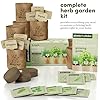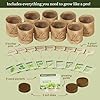Quictent Raised Garden Bed with Cover Outdoor Galvanized Metal Planter Box Kit, w/ 2 Large Screen Windows Mini Greenhouse 20pcs T Tags 1 Pair of Gloves Included for Growing Vegetables 6x3x1ft (Clear)
26% OffFoxlang 8x4x1ft(2 Pack) Galvanized Raised Garden Bed,Outdoor Planter Box Metal Patio Kit Planting Bed for Vegetables Flowers Herb,Silver
$69.99 (as of 14:38 GMT -05:00 - More infoProduct prices and availability are accurate as of the date/time indicated and are subject to change. Any price and availability information displayed on [relevant Amazon Site(s), as applicable] at the time of purchase will apply to the purchase of this product.)Garden grown vegetables are superior to grocery store produce by anyone’s standard, both in freshness and flavor. You can go out to the garden and pick your vegetables just before mealtime, at the peak of ripeness. You’ll save money and your family and lucky neighbors will love the results. Here’s a quick primer on the basics of planning a vegetable garden. If you’ve never grown your own vegetables, give it a try!
Start small. It’s easy to let your enthusiasm run wild, wanting to plant all of your favorites. The problem arises when you find yourself overwhelmed by the time required to maintain a large garden. Get one growing season under your belt to get a good idea of the tasks involved and the time you need to nurture your babies. A good size for the first-timer is about 4′ x 8′. A patio or balcony garden is easily managed, even when filled to capacity.
When planning a vegetable garden, your first decisions are location, layout and type of bed. Most vegetables require a southern exposure with at least eight hours of sunlight, so plan accordingly. Raised beds are easy to work and drain well. Lining the bottom of the frame with wire mesh provides protection from burrowing critters. You have a little more initial expense in constructing the frame and filling the bed, but in the long run, you’ll have less work and better results. If you choose to dig the ground directly, double-digging to a depth of 24 inches is recommended for the most friable soil and best drainage. If you’re growing in pots, use oak half-barrels or similar sized containers. Consult your nursery worker for veggie varieties that grow well in pots.
Prepare your soil thoroughly. You should be able to gently squeeze a big handful and have it just barely hold its form, then easily crumble as you sift it through your hands. Get a soil test kit and make any adjustments to correct for too acid or alkaline soil.
Planning a vegetable garden for maximum yield includes considering interplanting, a technique that allows you to grow two crops in sequence in the same space. For example, carrots and radishes may be planted with a row of lettuce. The carrots and radishes will be ready by the time the lettuce fills out the space.
Knowledge of companion planting is also useful when planning a vegetable garden. Some vegetables grow more vigorously when planted with another particular plant. For example, tomatoes and basil are good companions, producing better tomatoes, tastier basil and provide natural protection from pests. You also want to know what not to plant in proximity. Gladiolas shouldn’t be planted anywhere near tomatoes! Your tomatoes will not thrive!
Planning a vegetable garden is almost as much fun as growing and harvesting the delectable fruits. Start small, do your research, apply TLC generously and watch your garden grow!












































